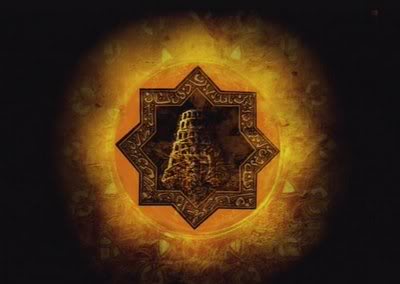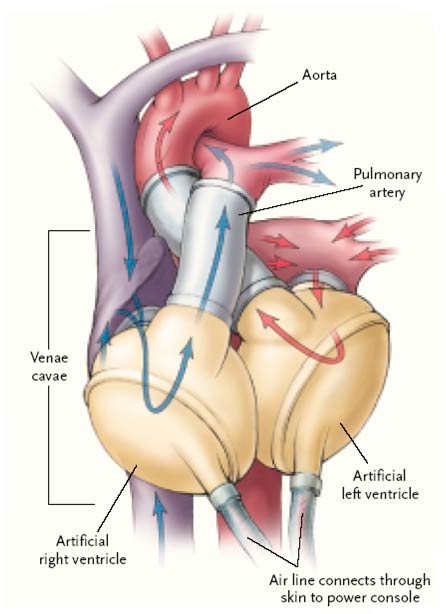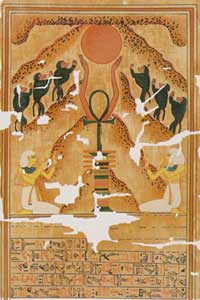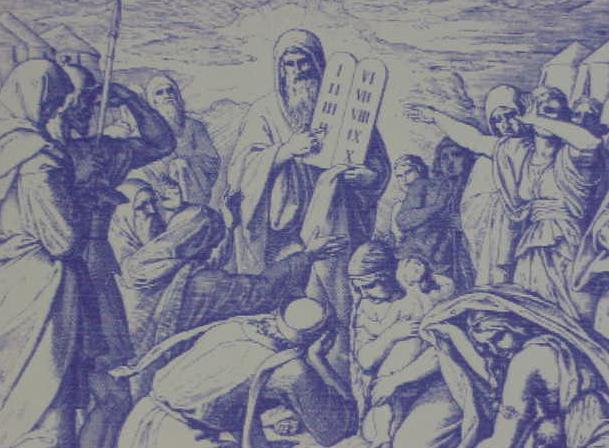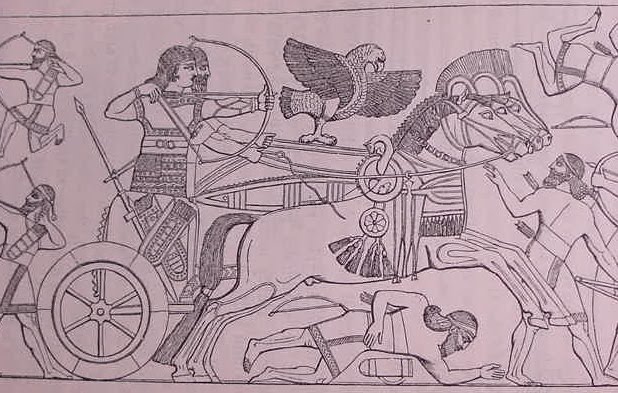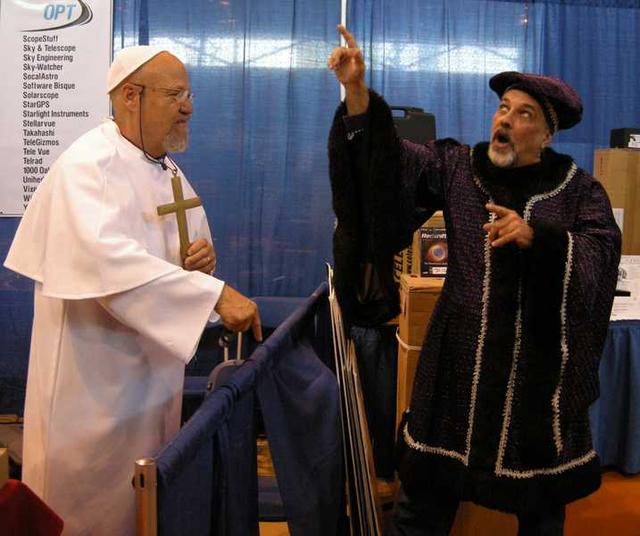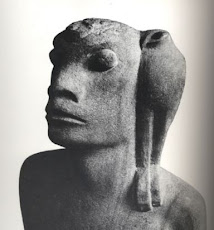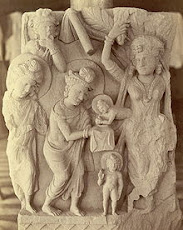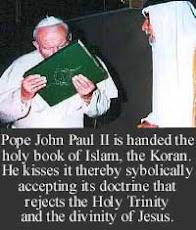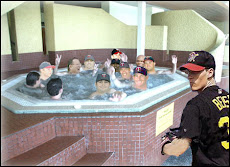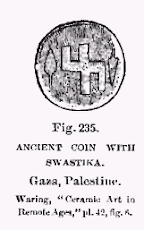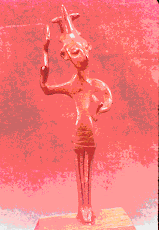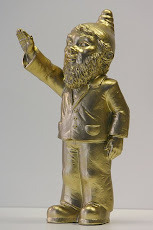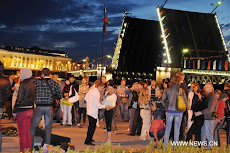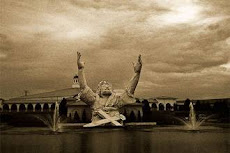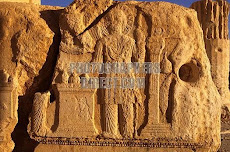If perchance there shall be idle talkers, who, though they are ignorant of all mathematical sciences, nevertheless assume the right to pass judgment on these things, and if they should dare to criticise and attack this hypothesis of mine (English translations of this letter put 'theory' instead of 'hypothesis') because of some passage of Scripture which they have falsely distorted for their own purpose, I care not at all; I will even despise their judgment as foolish. (Copernicus, in his dedicatory Letter to Pope Paul III)
So far as hypotheses are concerned, let no one expect anything certain from astronomy, which cannot furnish it, lest he accept as the truth ideas conceived for another purpose, and depart from this study a greater fool than when he entered it. Nicolaus Copernicus
Archimedes rejected classical heliocentrism of Aristarchus as a hypothesis and immortalized this rejection in his saying: “Give me a place to stand on and I will move the earth.” But Plutarch who was a priest of Apollo in the Delphic Oracle wrote, in the defense of the solar religion he professed, that a certain Seleucus, a Syrian astrologer proved Aristarchus' scheme. The authors of the Syrian translation of the Gospels known as Peshitta smuggled into their translation of the Gospel of Luke Seleucus's heliocentrism, but the canonical evangelists ignored it. Well, the Syrians, like Plutarch and the Romans worshipped a sun god under the name Mar Alah whose sculpture was preserved. The Hebrew Torah forbade the worship of sun, moon and other host of heaven, which was a common practice in all natural religions.
The Burden of Proof
In his Letter to the Grand Duchess Christina Galileo draws the distinction between scientific propositions which are “soundly demonstrated” (i.e. Proved) and others which are “merely stated”. If propositions of the first kind contradict the apparent meaning of passages in the bible, then, according to theological practice, the meaning of the passages must be reinterpreted. So far he has stated the attitude of the Church correctly; but he continues: “And as to the propositions which are stated but not rigorously demonstrated, anything contrary to the bible involved by them must be held false and should be proved so by every possible means.”
Now this was not the attitude of the Church. “Propositions which are stated but not rigorousalyy demonstrated,” such as the Copernican system itself, were not condemned outright if they seemed to contradict Holy Scripture; they were merely relegated to the rank of “working hypotheses”, with an implied “wait and see”; if you bring proof, then, but only then, we shall have to interpret Scripture in the light of necessity.” But Galileo did not want to bear the burden of proof; for the crux of the matter is, that he had no proof. Therefore, firstly, he conjured up an artificial black-and-white perspective, by pretending that a proposition must either be accepted or outright condemned. The purpose of this sleight of hand becomes evident from the next sentence:
“Now it truly demonstrated physical conclusions need not be subordinated to biblical passages, but the latter must rather be shown not to interfere with the former, then before a physical proposition is condemned it must be shown to be not rigorously demonstrated – and this is to be done not by those who hold the proposition to be true, but by those who judge it to be false. This seems very reasonable, for those who believe an argument to be false may much more easily find the fallacies in it than men who consider it to be trues and conclusive...”
The burden of proof has been shifted. The crucial words are those in italics. It is no longer Galileo's task to prove the Copernican system, but the theologians' task to disprove it. If they don't, their case will go by default, and Scripture must be reinterpreted. (A. Koestler, The Sleepwalkers, 436ff)
Well, in my comments for Blog4Brownback I did just that: I disproved the Copernican system showing that both Copernicus and Galileo did not really understand the mathematical working of heliocentricity.
The Lethal Math of the Solstices
Since Plato, all heliocentrists use the same deceiving trick: whenever they cannot explain certain phenomena in terms of heliocentric philosophy they revert to geocentric language or intermingle heliocentrism with geocentrism. The following excerpt from Wkipedia (entry: Solstice) is a typical sample of this doubletalk: “A solstice occurs twice a year, whenever Earth’s axis tilts the most toward or away from the Sun, causing the Sun to be farthest north or south at noon. The name is derived from Latin sol (sun) and sistere (to stand still), because at the solstice, the Sun stands still in declination, that is, its movement north or south is minimal.The sun doesn't move north or south in heliocentrism, it is the earth on its ecliptic which runs its yearly course.
According to the British National Maritime Museum, the solstices are the time when the Sun is at its furthest from the celestial equator and these occur in mid-summer and mid-winter. Incidentally, the British celebrate their midsummer’s day on either the 23rd or 24th of June, although their scientists assert that the longest day actually falls on the 21st of June and Wikipedia stresses that “Solstitial celebrations still centre upon 24 June, which is no longer the longest day of the year”.
In geocentrism, we would say: since the month of June the sun travels ever so slightly southward in the ecliptic each day for some six month of the year and each day the daylight becomes shorter. In December the sun halts for a few days in its journey before commencing the slow ascension northward once more for the next six month.
The sun moves in two cycles: 1) it is spiraling downward toward the tropic of Capricorn where the winter solstice occurs and 2) it is spiraling upwards toward the tropic of Cancer where the summer solstice occurs. Amazing thing is that when it reaches these two tropics it stays, for a few days, on the same orbit, or in other words, the sun stands still in declination.
The Inca Festival of the sun (Inti Raymi) marked the winter solstice and a new year in the Andes. One ceremony performed by the Inca priests was the tying of the sun. The ceremony to tie the sun to the stone was to prevent the sun from escaping to the North Pole. In Machu Picchu there is still a large column of stone called an Intihuatana, meaning “hitching post of the sun” or literally for tying the sun. The Roman Church, in order to prevent all critical reflection on Copernicus’s book, ordered the Spanish conquistadors to suppress all Inti Festivals, and to destroy all the intihuatana. One was preserved because the Spanish conquest never found Machu Picchu.. The perennial Roman heliocentrism is reflected in the pagan wheel of the year on the surface of St. Peter’s Square in front of St. Peter’s Church (see www.canadafirst.net/our_heritrage/solstice/). Since 1944, a theatrical representation of the Inti Raymi has been taking place at Sacsayhuaman (one mile from Cusco) on June 24 of each year, attracting thousands of local visitors and tourists.
The Roman historian Pliny observed in his Natural History: “We are so much at the mercy of chance that Chance herself, by whom God is proved uncertain, takes the place of God”. Like in Ch. Darwin’s books. In contradistinction, the Torah stresses: “To every thing there is a season, and a time to every purpose under the heaven.” (Ecc 3:1) So, God designed the solstices for a purpose. Can this purpose be discerned? The answer is a resounding yes. The solstices are the most convincing proof of the truth of the God inspired Torah’s astronomy. If the sun, having reached the solstitial tropics, reversed its spiral movement without staying on the same orbit for a few days we would not have this formidable argument against the heliohoax.
In order to fully comprehend this problem imagine substituting the speeding earth for the spiraling sun. The dead end arises when you try to explain a few days of the same length in the helioscheme. Because in this scheme the earth moves on the circular orbit of the ecliptic i.e. it moves downward or upward which also means that for half a year the days age growing shorter or on the upward turn – longer. They never stay the same, not on a few consecutive days of the year. In order to explain the solstices in heliocentrism we have to assume that at a certain point of of its travel the earth comes to a sudden stop, or, that its speed goes down from 20 miles per second to 0, and after a few days it suddenly jumps from 0 to 20 miles per second. Apocalyptic consequences of such an assumption for the life on earth are obvious unless you are so blinded by your helioreligion that you reject any rational argument. And besides, such an assumption thrashes the boondoggle of Newton’s Principia.
If the earth stands still for a few days it means that after that it has to increase its speed to make up for this delay, but that also means that covering more distance, thanks to the increased speed, would result in disproportionate increase of daylight on the upward travel of the earth and respectively decrease on the downward turn. Keep in mind the difference: the trajectory of the sun in geocentrism is spiral; the trajectory of the earth in the helioscheme is circular or elliptical if you prefer Kepler and Newton to Copernicus and Galileo.
When you introduce the moon into the solstitial equation, you’ll have to conclude that the solstitial areas are governed by a totally different set of physical laws that contradict the boondoggle hidden behind the Newton’s apple.
The authors who by their tables of date and time of solstices and equinoxes point to the empirically verifiable fact of the “sun” reaching the highest or lowest points in its travel around the earth miss the point, namely that it is the earth that stands still in declination (See, for example, the table of summer and winter solstices set up by the British National Maritime Museum at www.ac.uk/server/show/conWebDoc.3843) . The assertion that the summer solstices are the longest and shortest days of the year, and, that after the solstice, the days begin to get shorter or longer are simply not true. But on such false descriptions the helioboondoggle thrives since centuries.
Let me confront them with astronomical facts that totally destroy these deceptive manipulations. I will use for my presentation a Soviet calendar of the year 1989 because the Soviet astronomers are beyond any suspicion that they might manipulate the astronomical data. Copernicus being highly praised by K. Marx and F. Engels was embraced by them as a patron “saint” of their materialistic, atheistic ideology.
Here is their time of sunrises and sunsets on a few consecutive days in June and December of 1989: on June 20 the sun rose at 4.43 and set at 22.20; on June 21 again, sunrise at 4.43 and sunset at 22.20; on June 22, the same, sunrise at 4.43 and sunset at 22.20 and finally, on June 23 still the same, sunrise at 4.43 and sunset at 22.10. So, in effect we have not one longest day but four. Only on June 24 the sun rose one minute later (at 4.44) and set one minute later (at 22.21). We have the same situation on June 25, which means that we have 6 longest days of 17 h 37′ daylight. For four consecutive days the earth stood still in declination, which literally means that it did not move upward on its elliptical trajectory. Then it moved a little bit up to stand again for two days.
In the same year the Soviets had seven shortest days of 6 h 57′ daylight between December 18 and 24 although not in the same time frame: on Dec. 18 and 19 the sun rose at 8:58 and set at 15.55; on Dec. 20 and 21 the sun rose at 8.59 and set at 15.56; on Dec. 22 and 23 the sun rose at 9.00 and set at 15.57 and on Dec 24 the sun rose at 9.01 and set 15.58
In other words, in 1989 the earth stood still for 13 days. In helioscheme the earth covers the distance of 1, 728.000 miles per day and night and that means that on the remaining part of its trajectory the earth had to make up for over twenty million miles. Nobody, so far, explained the causes of these sudden stops and jump start accelerations.
In the year 2002 the Poles had only two longest days: on June 20 (sr 4.14- ss 21.01)* and on June 21 (sr 4.14 – ss 21.01). June 22 was one minute shorter. During the winter solstice they had the shortest day on December 21 (sr 7.43 – ss 15.25). But here is a surprise, December 22 was one minute longer (sr 7.43 – ss 15.26) but December 23 was, contrary to the rule, one minute shorter, exactly like the shortest day, although in a different time frame sr 7.44 – ss 15.26). December 24 was one minute longer (sr 7.44 – ss 15.27) but December 25 was again one minute shorter (sr 7.45 – 15.27). The Polish proverb says that it is only on New Year’s Day that the daylight is really longer “by a ram’s jump” (Na Nowy Rok przybywa dnia na barni skok).
*According to the table set up by the National Maritime Museum the summer solstice in 2002 occurred on 21 June, 13.24*According to the same source, the winter solstice occurred 22 December, 07.04
Consider in this context the dogmas of Copernicus’s contradicted by the results of Kepler’s researches.. The Polish Bombastes Furioso aka Sir Lucius O’Trigger hypothesized:
Planets move in perfect circlesPlanets move in constant speedSun at the center of these orbits
But Kepler showed:
Planets move in ellipsesPlanetary speed varies constantlySun is not quite at the center of the planetary orbits
Which “heliotruth” do you believe in? Is International Space Station moving in a perfect circle or rather in a perfect ellipse? Does it move in constant speed or rather its speed varies constantly? How do you drink water in zero gravity? I reflect on this question day and night since I saw the picture of the toilet installed aboard the ISS. Believe me, it’s a real monster.
Comment by Roman Pytel — November 30, 2007 @ 11:59 am
Galileo was a rather celebrated and frequent visitor to the Jesuit Roman College. His friendship with members of the Society of Jesus started in 1587, when, at the age of 23, he met Clavius, and continued for the rest of his life. The number and contents of Galileo's letters to Clavius show that he was a good friend of Clavius. The latter was able to needle Galileo about seeing Jupiter's four moons only because Galileo drew them on the lens of his telescope (One of his many confidence tricks). Other letters demonstrate the fact that Clavius' support for the heliocentric teaching was the preponderant reason for its acceptance among the learned. In the time of his distress it was to Jesuits like Clavius that Galileo turned. At one point the Jesuits of the Roman college having confirmed his discoveries of the motion of the earth honored Galileo with a three day celebration.
Otto Struve, of Pulkova, announced in 1873 that he had observed the dark companion of Procyon, whose existence had been suspected, on theoretical grounds, by Bessel (1844) and Auvers (1861). He continued, for some years, to publish his observations of it. It was then discovered to be an optical illusion, due to flaw in his object glass, which was found to give similar spurious companions to Arcturus, Capella, and Regulus.
GALILEO’S HUMAN EXPERIENCE AND REASONING
On the 100th anniversary of A. Einstein’s birth (Oct. 16, 1979), the pope made an admission: “The greatness of Galileo is comparable to that of Einstein, something recognized by all. The difference is that today, in the presence of the College of Cardinals…we are honoring Einstein, whereas Galileo was made to suffer a great deal…by the men and the organization of the Church.” 13 years later, in Oct. 1992 the pope declared that “Galileo, a sincere believer, showed himself to be more perceptive…than the theologians who opposed him.” The worst part of the Galileo error, the pope wrote, was that it “helped to anchor a number of scientists of good faith in the idea that there was an incompatibility between the spirit of science and its rulers of research on one hand, and the Christian faith on the other…a tragic mutual incomprehension…The Bible does not concern itself with the details of the physical world, the understanding of which is the competence of human experience and reasoning. There exist two realms of knowledge, one that has its source in Revelation and one that reason can discover by its own power…The distinction between the two…ought not to be understood as opposition. The methodologies proper to each make it possible to bring out different aspects of reality.” Knowledge that Reason can discover says: when in 1623 Galileo described how, if you whirl round in a circle holding out a pan of water with a ball in it, the ball will revolve in a contrary direction, he was defending Copernicus’s introduction of the idea of contrary rotation to explain celestial mechanics. But Galileo did not bother to explain who was holding out the pan with rotating earth in it! And the pope spurned the problem as well. It is not true, in spite of the pope’s assertion to the contrary, that Knowledge that has its source in Revelation does not concern itself with the details of the physical world. It does!
Consider the very revealing fact that in the Bible the number pi=3 and not 3.14. For Plato the certainty of mathematics (i.e. p=3.14) had been essential training for philosopher, “because he must rise above the world of change and grasp true being; it will tend to draw the soul towards truth and direct upwards the philosophic intelligence which is now wrongly turned earthwards; it forces the mind to arrive at pure truth by the exercise of pure thought.” Col 2:8 warns “Beware lest any man spoil you through philosophy and vain deceit, after the tradition of men, after the rudiments of the world, and not after Christ.” In Riemannian elliptical space the circumference of a circle is always smaller than 2 pi times its radius. Accordingly, a Tennessee legislator suggested the value be legally fixed at 3, exactly like in the Hebrew Bible. It took more than 2000 years that the learned world could understand the deeper meaning of the Biblical Mathematics!
Osiander observed in his preface to Copernicus's book: "Since different hypotheses are sometimes available to explain one and the same motion...an astronomer will prefer to seize on the one which is easiest to grasp; a philosopher will perhaps look more for probability; but neither will grasp or convey anything certain, unless it has been divinely revealed to him."
Einstein's Greatness? Consider how deceitfully his dogma that the light is bent in the gravitational field was confirmed: No suitable stars were close to the sun during the eclipse period. And in addition to many technical difficulties. On the big day itself, the weather was cloudy. When the results proved inconclusive, Eddington set about massaging the data (sexing up the data, the Anglican scientists love the Jews who, like A. Einstein, despise the Torah), summarily discarding photographs that failed to confirm his pre-established views and suppressing contradictory evidence gathered by other eclipse teams. Many scientists were already converted to Einstein ideas and Eddington drew on his influential contacts to convince them that his expedition demonstrated the truth they wanted to hear. Nevertheless, some experts remained sceptical, and two decades went by before American astronomers were converted. (Patricia Fara, Science.p, 250f)
On 25 May 1977 I delivered at the Polish Oriental Society a lecture about Geocentric Astronomy of the Book of Job –“He stretched out the North over the empty place and hangeth the earth upon nothing” (Job 26:7) – A heliocentric diagram from the period before Joshua’s conquest unearthed in Israel confirms that the ancient Jews knew the heliocentric system elaborated later by Pythagoras, but rejected it (The Babylonian epic Enuma Elish mentions that the sun god Marduk established the orbit of the earth around the sun). The Biblical Secretaries of God knew about the relativity of the sunlight and therefore could not accept the heliocentric sun as the Light of the World and a Visible God (Darkness is also light for those creatures that can see in night, like owls and many other). My article “At the Sources of the Copernican Heliocentrism” was printed in the “Urania” 1/1981/LII, monthly of the Polish Association of the Friends of Astronomy. I pointed out in that paper that Copernicus did not prove immobility of the sun scientifically i.e. mathematically; rather he embraced the philosophical dogma that the sun being a god must rest (cp. Aristotle’s Unmoved Mover): “Moreover, the state of immobility is being considered more noble and more divine than the state of mutability and instability, which for that reason should be ascribed rather to the earth than to the universe (i.e. fixed stars and the sun) (De revol. I, 8 Polish edition of 1976, p. 18)
Roman Pytel Ph.D., poles4torah
http://blogs4brownback.wordpress.com/2007/05/18/heliocentrism-is-an-atheist-doctrine/
Thursday, December 17, 2009
Subscribe to:
Comments (Atom)



















































































































































































































































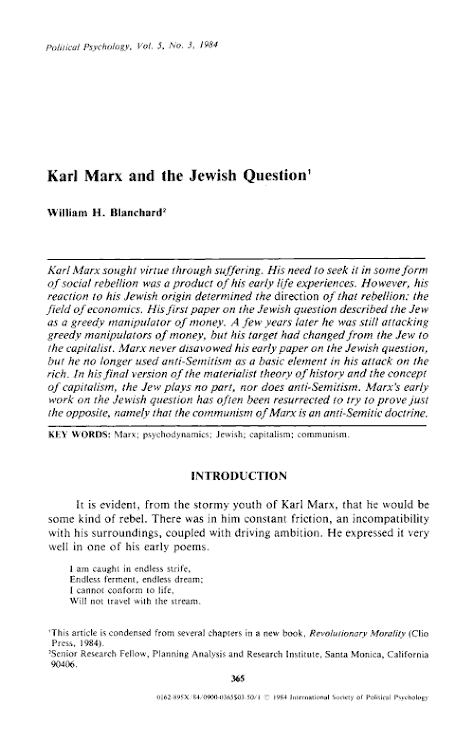











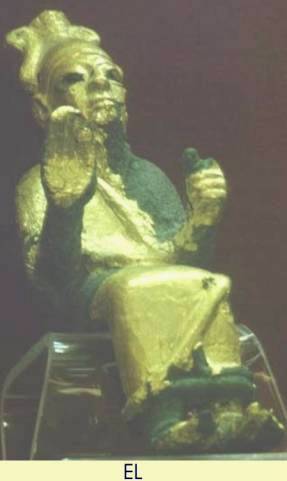

































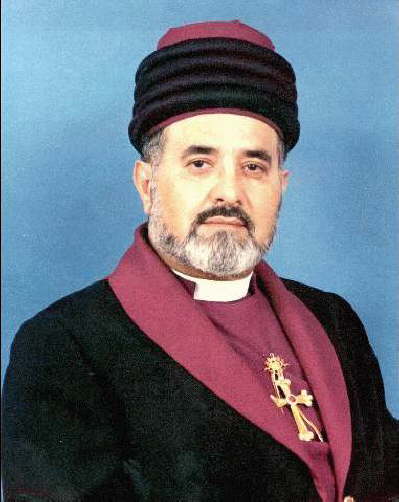+Anniversay+Dinner.jpg)





